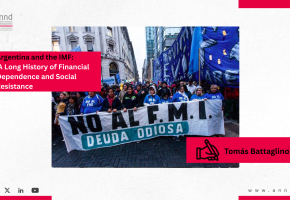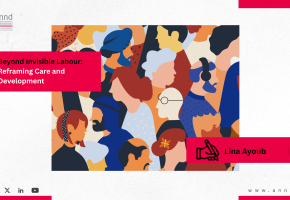
The right to health through a social protection lens - Rana Jawad, PhD & Walaa Talaat, PhD
This research is a part of the Arab Watch Report 2023 on the right to Health.
The right to health through a social protection lens - Rana Jawad, PhD & Walaa Talaat, PhD
Please click here to download the full report.
Introduction: The evolution of the concept of social protection in international and Arab debates on development
The link between health and socio-economic outcomes, not least poverty, is well recognized in international policy and research debates (IMF 2020; ILO 2008), taking center stage in both the Millennium Development Goals (MDGs) and Sustainable Development Goals (SDG) frameworks (ILO 2008). In social protection discourse, health is the first contingency of the lifecycle, making affordable, adequate, and accessible health services not only an indicator of well-being but also an outcome of successful economic growth in high-income countries and a vital pathway to development in low and middle-income countries (ILO 2008). Social protection, in particular, has a key role in mitigating ill health and addressing the social determinants of health (ILO 2022). Against this background, the main aim of this report is to provide a critical analysis of the current status and future prospects of the right to health through a social protection lens in the Arab region. The report focuses on the main social protection measures and strategic reforms driven by austerity measures and budgetary considerations in the post-COVID-19 era, in the context of weak regional social protection policies.
Given the assumptions of universality and adequacy of benefits in the right to health, the report covers the targeting and universal coverage dilemma in the region, including, actual responses during and post-COVID and Arab government philosophies of social protection. It does so by examining how Arab populations access health protection services through the following modalities: government-provided public health systems (which rely on taxation and government revenues); social insurance for formally employed private and public sector workers; social safety nets that include a health component (such as cash transfers); out of pocket expenditure (which is known to be very high in the region); and, finally, private medical health insurance (such as through occupational programs or market-bought services). To this end, the report distinguishes its focus from standard public health analysis by referring to Social Health Protection (SHP), defined below (ILO 2008).
The countries covered in the report are the 22 countries of the Arab League which fall into three categories according to their gross national income (Mokdad et al. 2014): low-income countries (LICs; Comoros, Djibouti, Mauritania, Yemen, and Somalia), middle-income countries (MICs; Algeria, Egypt, Iraq, Jordan, Lebanon, Libya, Morocco, Palestine, Sudan, Syria, and Tunisia), and high-income countries (HICs; Bahrain, Kuwait, Oman, Qatar, Saudi Arabia, and the United Arab Emirates). The region is quite diverse economically and socially, resulting in different health status and public health outcomes. Poverty estimates vary considerably but exceed 50% in the poorest countries and in some countries engaged in active conflict (Mokdad et al. 2014).
Before proceeding, it is important to note the two main limitations in the analysis presented in this report. First, this report provides data about SDG 1 (“No poverty”) and SDG 3 (“Good health and well-being”), particularly in the context of indicator 1.3.1 (“End poverty in all its forms everywhere”), and 3.8.1 (Coverage of essential health services). The most comprehensive and reliable data source we could find for this is International Labor Organization (ILO) World Social Protection Database (WSPDB) using ILO STAT.
Measuring social protection effectiveness through effective coverage is a complex task that requires considering several dimensions to arrive at a comprehensive assessment. In practice, few Arab countries have available national statistical data necessary for such an assessment of coverage, and where available, data is often outdated. Furthermore, only partial information is available for some of them. As such, for consistency, this report relied on WSPDB using ILO STAT as the main source of global data on social protection, which is reported or imputed. The regional average of Arab countries is calculated for the available reported data for countries found at ILO STAT as shown in each figure.
Second, the concept of universal social protection applied in this report focuses on coverage and adequacy of benefits. As it has developed in policy and conceptual debates worldwide, the concept does not address intangible aspects of deprivation such as dignity, trust, and freedom which are indeed a core part of people's protection and empowerment but only assumed to be outcomes of effective social protection policies. There are studies worldwide that provide evidence of the beneficial effects of social protection on economic and social well-being, but here in this report, the focus is on mapping the existing systems and coverage in Arab countries and assessing ways in which these might be improved. Hence, the report emphasizes the issue of access to social protection for all population groups throughout their lifecycle to achieve universality.
Rana Jawad, PhD & Walaa Talaat, PhD
Please click here to download the full report.
This research is a part of the Arab Watch Report 2023 on the right to Health.
Recent publications

Argentina and the IMF: A Long History of Financial Dependence and Social Resistance - Tomás Battaglino
Related publications


